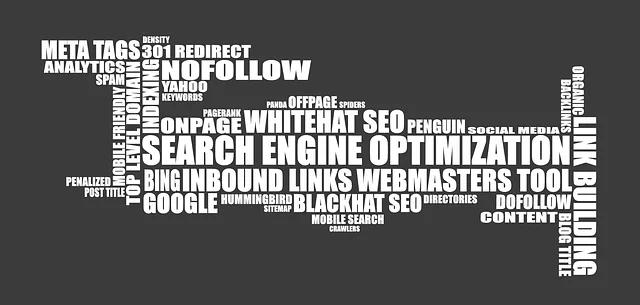Mastering SEO Website Architecture: Optimizing Content Categorization Strategies
SEO Website Architecture is a fundamental strategy for content categorization, optimizing website st…….

SEO Website Architecture is a fundamental strategy for content categorization, optimizing website structure to boost search engine rankings and user experience. By organizing content into logical categories and subcategories, sites facilitate indexing, improve navigation, and enhance user engagement. Keyword research guides this process, ensuring content aligns with search intent and algorithms. Strategic internal linking, including relevant anchor text, aids crawlability and distributes link equity. Optimized title tags, meta descriptions, and headings further support architecture while measuring success through key metrics like CTRs, time on page, and bounce rates ensures ongoing refinement for maximum SEO impact.
In the competitive landscape of digital marketing, efficient SEO website architecture is non-negotiable. Content categorization plays a pivotal role in enhancing search engine visibility and user experience. This article delves into the intricate components of SEO website architecture, exploring strategies like information hierarchy, logical site structure, keyword research integration, and effective interlinking. By understanding these elements, businesses can optimize their online presence, ensuring search engines crawl and index content efficiently while providing users with a seamless navigation experience.
Understanding Content Categorization: The Cornerstone of SEO Website Architecture

Content categorization is a fundamental strategy in search engine optimization (SEO) that involves organizing website content into logical and meaningful groups. It plays a pivotal role in shaping the structural foundation of an SEO-friendly website architecture. By categorizing content, websites can convey their information hierarchy to search engines, making it easier for crawlers to understand and index their pages effectively.
This process ensures that related topics are grouped together, allowing users to navigate seamlessly through the site. A well-structured content categorization system not only enhances user experience but also enables search engines to deliver more accurate search results. As a result, websites with robust content organization tend to perform better in search engine rankings, driving organic traffic and boosting online visibility.
The Role of Information Hierarchy in Search Engine Optimization

In the realm of Search Engine Optimization (SEO), website architecture plays a pivotal role, especially in content categorization. The structure and hierarchy of information on a website directly impact how search engines crawl and index pages, ultimately affecting a site’s visibility and rankings. A well-organized SEO website architecture ensures that both users and search algorithms can easily navigate through various topics and subtopics, fostering a seamless experience.
Effective information hierarchy involves structuring content in a logical manner, with primary categories and subcategories, allowing visitors to find relevant information swiftly. This hierarchical structure signals to search engines the importance of different pages, facilitating better comprehension of the website’s content map. Consequently, optimized navigation enhances user engagement while ensuring that search engines can access and process every page, thereby boosting overall SEO performance.
Creating a Logical Site Structure for Enhanced User Experience

A well-structured site architecture is a cornerstone of successful Content Categorization SEO strategies. It involves creating a logical hierarchy and navigation system that enables users to effortlessly find relevant content. By organizing pages and categories in a meaningful way, you enhance user experience, reduce bounce rates, and encourage longer browsing sessions. This translates into better search engine rankings as Google favors websites that offer a seamless and intuitive user journey.
For instance, implementing a clear parent-child relationship between main categories and subcategories allows visitors to browse content systematically. A well-designed SEO website architecture also considers internal linking strategies, ensuring that each page supports one another and contributes to the overall information flow. This not only aids search engine crawlers in indexing your site effectively but also helps users discover new and related content within your domain.
Keyword Research and Its Impact on Content Organization

Keyword research is a fundamental step in content categorization, playing a pivotal role in shaping the overall SEO website architecture. By identifying relevant keywords and phrases, content creators can organize their material in a manner that resonates with search engine algorithms and user intent. This process involves analyzing search trends, understanding audience demographics, and pinpointing the specific terms potential visitors might use to find information on a particular topic.
Well-conducted keyword research allows for strategic content placement, ensuring that each piece of content is categorized appropriately within the website’s architecture. It helps in creating a hierarchical structure that facilitates easy navigation for users and search engine crawlers alike. As a result, a robust keyword strategy contributes to improved site visibility, higher rankings, and ultimately, better user engagement.
Implementing Effective Category and Subcategory Systems

Implementing a robust category and subcategory system is a cornerstone of effective SEO website architecture. This hierarchical structure helps search engines understand your content’s context, leading to better indexing and increased visibility. When organizing your site, start by defining broad categories that encompass your main topics. From there, drill down into relevant subcategories, ensuring each has a clear focus. For instance, if your main category is “Technology,” subcategories could include “AI,” “Computer Hardware,” and “Software Development.” Each subcategory should then be further divided as needed to create a comprehensive network of content.
This structured approach allows users to navigate your site intuitively while providing search engines with valuable semantic signals. When interlinking relevant content within these categories, use anchor text that reflects the subcategory’s topic. This reinforces the thematic connections between pages and promotes a cohesive SEO strategy for your website architecture.
Interlinking Strategies for Improved Crawlability and Indexing

In the realm of SEO Website Architecture, interlinking strategies play a pivotal role in enhancing crawlability and indexing. By strategically linking pages within your website, search engine crawlers can efficiently navigate and understand the site’s content hierarchy. This not only facilitates faster indexing but also improves overall user experience by providing seamless access to related information.
Interlinks act as digital signposts, guiding both users and search algorithms to relevant content. When implemented correctly, these links help distribute link equity, where authority is passed from one page to another, thereby boosting the overall SEO performance of the website. Additionally, interlinking can create a more robust and diverse sitemap, further aiding in search engines’ indexing process.
Optimizing Individual Pages: Title Tags, Meta Descriptions, and Headings

Optimizing individual pages is a crucial aspect of Content Categorization SEO, ensuring each page contributes to your overall search engine rankings. A well-crafted title tag acts as a brief summary of the page’s content, capturing the user’s attention and conveying key keywords. It should be unique for each page while keeping readability in mind, ideally under 60 characters.
Meta descriptions provide a concise overview, enticing users to click while also including relevant keywords. Though not directly ranked on by search engines, they significantly impact click-through rates. Headings, structured using H1, H2, and so on, organize content hierarchically, making it easier for both users and search engines to understand the page’s structure and identify key topics. Effective use of headings enhances readability and can further bolster SEO efforts within the context of a well-structured SEO Website Architecture.
The Science Behind Internal Link Anchor Text

The internal link anchor text plays a pivotal role in search engine optimization (SEO) and is an integral component of a well-designed website architecture. It serves as a concise summary of the target page’s content, providing both context and relevance to users and search engines. When crafting anchor text for internal links, it’s essential to strike a balance between keyword usage and readability.
Each link should act as a gateway to relevant content, ensuring a seamless navigation experience for visitors while simultaneously assisting search algorithms in understanding the hierarchical structure of the SEO website architecture. By incorporating targeted keywords naturally within these anchor texts, search engines can better index and rank pages, leading to improved visibility and user engagement on the site.
Measuring Success: Analyzing Content Categorization Effectiveness

Measuring success is a vital step in evaluating the effectiveness of content categorization within an SEO strategy. It involves analyzing key metrics to understand how well the organized content is performing and if it aligns with user intent and search engine algorithms. By assessing click-through rates (CTRs), time on page, and bounce rates for categorized pages, marketers can gauge user engagement and satisfaction.
Effective content categorization should lead to improved user experience, as relevant content is readily accessible. This, in turn, can enhance website architecture by making navigation more intuitive. High CTRs and longer dwell times indicate that users are finding the desired information quickly, while low bounce rates suggest they are engaging with the content. Such insights can inform future content strategies, ensuring that categorization remains optimized for both search engines and users alike.







